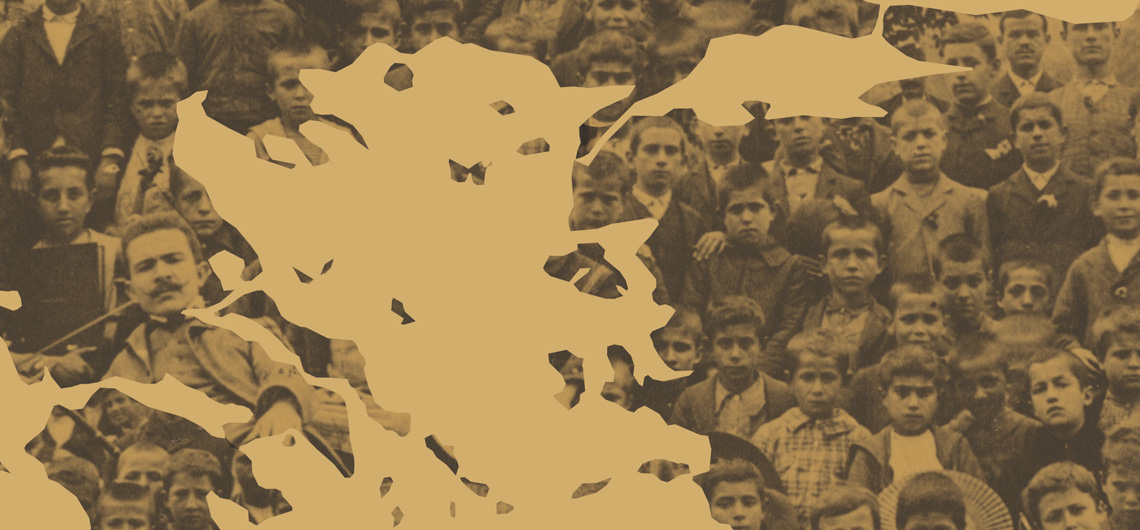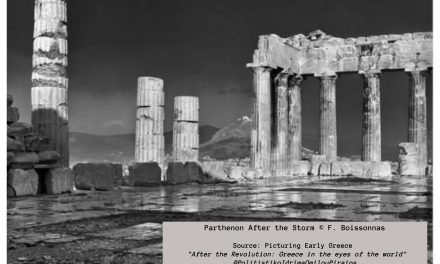On the occasion of the centenary of the Asia Minor Catastrophe, the Benaki Museum and the Centre for Asia Minor Studies pay tribute to the history of Asia Minor Greeks through the exhibition “Asia Minor Hellenism: Heyday – Catastrophe – Displacement – Rebirth“.
More than 1,000 exhibits and over 500 photographs will bring to life the heyday of Hellenism in Asia Minor which was followed by a period of persecutions, and massive displacement, until the beginning of a new life in Greece.
Heyday – Catastrophe – Displacement – Rebirth
Asia Minor used to be home to numerous large Greek communities; the history of Hellenism in the area goes back as early as the 9th century BC, with the establishment of Aeolian, Ionian and Dorian colonies. Greeks maintained a strong presence in Anatolia, which was even more felt following the establishment of the Hellenistic kingdoms and, later, the Byzantine Empire, which was centred around Constantinople.
Even after the entire Greek world became part of the Ottoman Empire, the Greek population continued to form an integral part of the area’s cultural profile, and the Christian communities of Constantinople, Smyrna, Ayvalik and other Anatolian cities and villages were often more vibrant and prosperous compared to population of the Greek mainland.
In the beginning of the 20th century, these Greek communities experienced a period of great flourishing, soon to be followed by persecutions, first due to the outbreak of World War I (where Greece and the Ottoman Empire fought on opposing sides) and then due to the Greco-Turkish War of 1919-1922. This culminated in the destruction of the city of Smyrna on 14 September 1922 which resulted in a massive exodus; the population exchanges stipulated by the Lausanne Peace Treaty of 1923 caused even more Greek refugees to arrive to Greece.
The exhibition covers these dramatic period in the history of Asia Minor Greeks, with a first section highlighting the heyday of the Greek communities, the second documenting their persecutions and displacement, and the third one focusing on their arrival in Greece, their struggle to start a new life and their eventual integration into Greek society, which they greatly influenced, playing an integral part in the formation of the Modern Greek identity.
 Smyrna in flames, 14 September 1922. Loukas P. Christodoulou Archive
Smyrna in flames, 14 September 1922. Loukas P. Christodoulou Archive
History is brought to life through works of art, religious icons, ecclesiastic relics, military memorabilia, family heirlooms, folk costume, jewellery, handcrafted items, maps, photographs, documents, films, newspapers, letters, postcards etc., often accompanied with extracts from personal testimonies.
The exhibition is held under the auspices of H.E. the President of the Hellenic Republic Ms. Katerina Sakellaropoulou
The Centre for Asia Minor Studies
Since the exhibition is co-organised by the Centre for Asia Minor Studies, and draws from its archives, a small section of it is dedicated to Centre itself, one of the most important institutions for the preservation and promotion of Anatolian Greek heritage. Founded in 1930, it has been involved in the research, collection and documentation of information as well as oral and written documents of Asia Minor Hellenism.
Its founders were Melpo Merlier (née Logotheti), a Greek musicologist and folklorist who grew up in Constantinople, and Octave Merlier, whom she met while studying musicology in Paris. After their marriage, he would follow her in Greece, where he would serve as the Head of the French Institute of Greece from 1938 to 1961.
The main focus of the Centre’s research was initially the oral and musical tradition of Asia Minor Hellenism, but its scope would gradually expand to include all forms of tangible and intangible heritage. It now includes archives featuring oral tradition material, manuscripts, photographs, maps, drawings, private archives bequeathed to the Centre, and the Musical Folklore Archives which had formed the core of the organisation. The Centre also publishes a scientific journal, scientific monographs and other publications featuring the results of its research.
Read also via Greek News Agenda: All of Greece, One Culture | Commemorating the Asia Minor Catastrophe, 1922-2022; The National Archaeological Museum of Athens marks the centenary of the Asia Minor Catastrophe; The Asia Minor Catastrophe through the eyes of contemporary Greek artists; 1922-2022, Remembrance and Art Stories
N.M.














